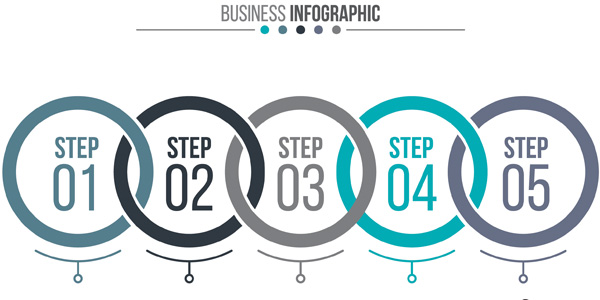“It was just a joke!”
“I didn’t mean anything by it.”
“No one’s ever complained before…”
There are about as many non-excuses for workplace harassment as there are different forms of harassment. During a recent Compli Webinar, “Best Practices for Creating an Anti-Harassment Initiative,” labor and employment attorney Stephen J. Roppolo tore down a number of these faulty justifications for discriminatory workplace conduct.
Roppolo told the audience that many of the arguments alleged harassers and their apologists use to minimize inappropriate conduct simply don’t hold up in front of a jury, judge, or Equal Employment Opportunity Commission (EEOC) investigator. For instance:
“One of the most important things I hear about is, ‘Well, you know, you can’t govern offsite conduct,’ or, ‘You can’t take action against me because it was off the clock when I made that comment.’ The reality is that’s not the case. If there was some connection with work, then it is going to be something that can be subject to an EEOC charge or lawsuit. And even if the conduct was not ‘sexual’ — and I sometimes hear this when I have a case where someone says, ‘You know, sure, I teased about sex, but I didn’t really want to have sex with that person,’ as if the harasser’s intent to actually consummate the arrangement is what matters. It’s not really what matters. It’s what the complainant is receiving in terms of harassing behavior that matters.”
Is there any tenable defense against a harassment claim? “The best thing,” Roppolo said, “is to find yourself not in court, not dealing with those situations, by combating harassment proactively.” In other words, if you don’t want to deal with a legal dispute the aftermath of harassment, don’t let harassment happen in the first place.
What follows are Steve’s five steps to combat harassment and improve organizational culture, as adapted from his presentation:
1. Create and Follow a Robust Anti-Harassment Policy
Harassment policies aren’t rocket science. Still, you might be amazed by how, when faced with a complaint, many supervisors and managers admit, “I’ve got to go look our policy up. I don’t really know what it says.” Every supervisor or manager at your organization should be familiar your organization’s policy, and should be trained to respond quickly, thoroughly and professionally to a complaint.
Zero tolerance is the standard for most harassment policies. Employees should know there’s no form of minor or acceptable harassment. A good policy defines key terms and makes it clear, in plain language, what it is prohibited and what is not. Sometimes, the best way to do that is to provide some examples of behavior that would violate the policy.
A good policy should also communicate that no employee who complains will be subject to retaliation; that there won’t be adverse action against the individual just because they complained. I often hear from clients who ask, “What if the complaint’s bogus?” Resist the temptation to punish an employee because you think their complaint had no merit. You’re walking into a retaliation charge or lawsuit if you do so. It’s better to just be as objective and neutral as you can, deal with the complaint, and move on.
2. Look for Warning Signs
Aside from knowing the relevant policy, those in charge of your organization need to be able to look for the warning signs. You don’t have to be a trained social worker or therapist to know if an individual in your organization is likely the victim of harassment. Many forms of harassment, such as name-calling and vandalization, occur in the open — they’re meant to embarrass someone.
That said, numerous kinds of harassment happen outside of the workplace, or in backchannels not immediately visible to managers and supervisors. Keep in mind that texts and social media exchanges between co-workers can quickly turn into instances of harassment, as can after-hours events, particularly if they involve the consumption of alcohol.
3. Set the Tone at the Top
Leaders should act like leaders in everything they say and do, so employees understand that their boss takes the rules seriously. That means not engaging in inappropriate behavior, and, when you see the behavior, taking steps to make sure it stops.
If you’re a leader, you’re always a leader; you’re never really off duty. Managers who have some responsibility for employees they work with should keep in mind that that responsibility doesn’t stop when employees clock out. It’s best for everyone at the organization to socialize with friends away from work, and keep interactions between employees during work hours. If you do have an after-hours event involving employees, make sure to limit the availability of alcohol. Avoid shots.
Whenever they can, leaders need to model good behavior. If employees see you being inclusive and making sure everybody’s involved, they’ll be less likely to cross the line and engage in discriminatory behavior themselves.
4. Handle Complaints the Right Way
Complaint handling is crucial. This may be the most important step from a litigation standpoint because it potentially provides an organization with an affirmative defense. From an employee relations standpoint, it’s also critical that employees know their complaints are going to be taken seriously. Otherwise, employees may be reluctant to file complaints at all. The policy should make clear that complaints will be handled by more than one person. Even in a small organization, any manager or supervisor who has authority to hire and fire ought to be available to receive complaints. If an organization can show that employees know how to complain, and that they, in fact, did not complain, that goes a long way toward an affirmative defense in a legal dispute.
Remember that employees may go to supervisors first; they may not necessarily go straight to human resources. Accordingly, supervisors need to know how to avoid making snap judgments and assuming something isn’t, in fact, harassment. No matter how obvious the situation seems, managers should stay neutral and follow the organization’s follow-up procedures.
All employees should feel empowered to provide all the information about the incident and feel confident that their superiors will handle the investigation without delay. That doesn’t mean you have to drop everything you’re doing, but it does mean you have to prioritize following up. This sense of high priority is necessary so that, later, the organization won’t be accused of sweeping it under the rug.
During initial communication with the witness or victim alleging harassment, managers and supervisors should remain as impartial as possible. As a leader, you’re in a fact-gathering mode. The complainant needs to understand, in your own words, that there won’t be retaliation, that you take their complaint seriously, and that you’re going to pursue this with human resources.
Avoid off-the-record conversations, even if the complainant requests one. If they say, “I want to just confide in you but I don’t want you to tell anybody else,” and if it turns out that they’re complaining about conduct that would violate the policy, you need to pursue it — because you have an obligation to pursue it, whether an employee asks you to or not. Remember, there may be other people out there who are also being victimized by someone engaging in this kind of conduct. We owe it to all of our employees to look into these issues.
5. Contact HR
Make sure human resources is involved in addressing every complaint. HR doesn’t always need to be the front line, but they can run across the finish line, so to speak, with the investigation. They can also certainly help in deciding what to do about the alleged perpetrator and the alleged victim.
Keep in mind that even following a comprehensive investigation with involvement from HR, the incident may still look like a “he said, she said” situation. You may have done everything you can to try to determine what really happened, and you just can’t because the two sides are clearly telling different stories. That’s okay. The process is almost as important as the result. As long as we’ve gone through the process and we’re thorough, what matters is that everyone is following the organization’s harassment policy, and that any complainant feels encouraged to come forward with other complaints.
Finally, documentation is always important. Make sure to retain any notes and emails, so that if it does go to litigation, or an EEOC charge, you’re covered.













